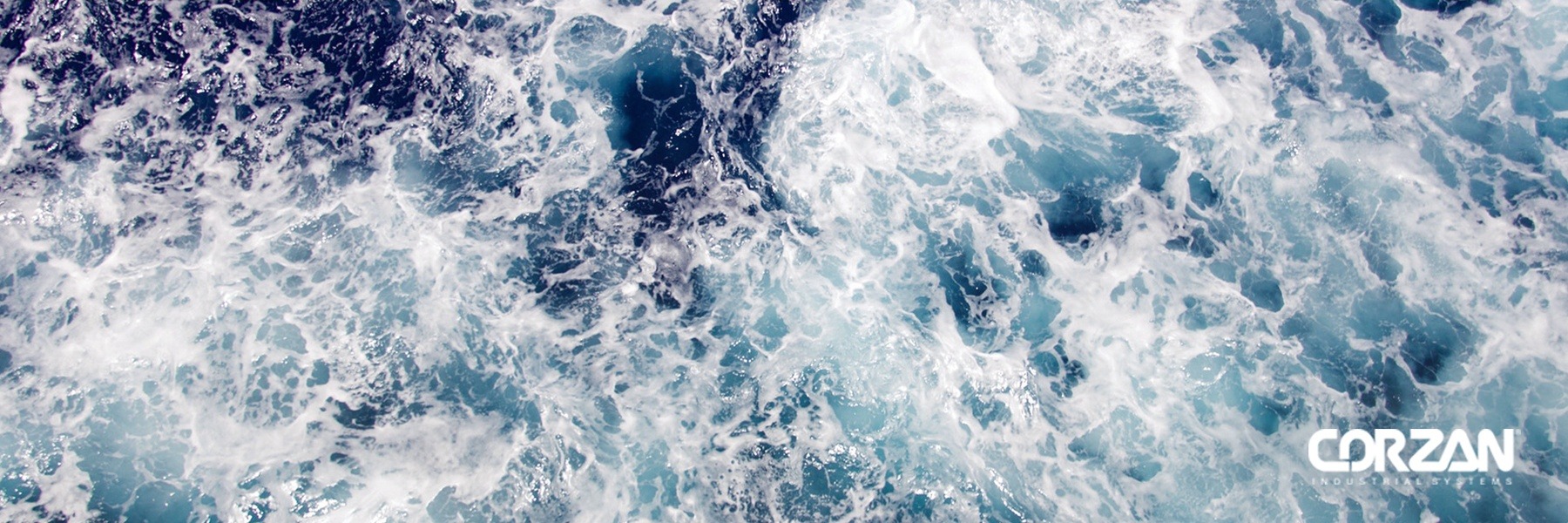5 Piping Material Considerations for Desalination System Design
You have likely heard it before—more than 70% of the earth is covered by water. However, in terms of potentially consumable water, freshwater only makes up 2.5% of total global water. And 68.7% of all freshwater is bound up in glaciers and ice caps.
Put simply, most of the earth’s natural water cannot be easily consumed to sustain life. And with the global population increasing an estimated 83 million people per year, efficient methods for creating safe drinking water must be increasingly adopted.
The greatest opportunity for new freshwater is to utilize easily available seawater and convert it to usable drinking water. Desalination is the process used to remove salt from saline water to create potable water.
To create a dependable desalination system that will handle its unique demands, specific considerations must be made for the piping material selection.
How Desalination Works
Desalination systems are most often seen along ocean shorelines, in open water or on ships (such as cruise ships). In each case, the purpose is to transform the saline water, which contains dissolved salt and other minerals, to potable water.
Desalination systems involve multiple steps. Starting with the intake from the ocean, feed water undergoes pretreatment—the multi-step filtration process used to remove any solid particles suspended in the seawater, such as sand or algae.
After filtration, high pressure pumps increase the pressure of the water to approximately 1000 PSI. The water is pumped to membrane modules, which are made up of semipermeable materials that allow reverse osmosis to take place. Normal osmosis involves a solvent moving from a low concentration to a high concentration. In desalination reverse osmosis, high concentration saltwater is forced through the membranes to freshwater, as the salt is rejected from passing through.
Now that reverse osmosis has generated desalinated water from the seawater, it is moved forward through the system. Meanwhile, the highly concentrated salt solution is carried away and sent back to the ocean.
Depending on the end use of the water, the desalinated water will go through any necessary post-treatment processes. For example, drinking water may require pH adjustment, disinfection, and regulation of sodium chloride, calcium and magnesium levels. These post-treatment techniques, such as chlorination of the water, can be detrimental to piping materials such as polybutylene, copper and polypropylene—but are no concern for Corzan CPVC.
Considerations for Piping Material Selection
During the desalination process, multiple factors must be considered before selecting a piping material.
1. Corrosion and Scaling
During the desalination process, corrosion can plague certain piping systems. Many desalinations systems are located in geographic areas that pose external corrosion concerns in addition to internal corrosion.
Potential causes of corrosion or scaling during the desalination process are the:
- Highly saline seawater pulled from the ocean prior to desalination.
- Calcium and magnesium in the water that may cause scale build-up.
- Pretreatment chemicals, such as anti-scaling and fouling inhibitors.
- Chlorine added to disinfect the water is corrosive lowers the water’s pH.
2. Leaching
To create safe drinking water, leaching must be avoided. Leaching occurs when impurities disassociate from the pipe and contaminate the fluid.
How do different piping materials perform against leaching?
- Metals. Galvanized pipe is generally safe against leaching. However, because metal is inherently susceptible to corrosion from saline water, which often contains suspended minerals like calcium and magnesium, it can corrode and leach contaminants into the flow.
- PVC. PVC is inherently resistant to salts, so the saline solution is not a problem. Yet, PVC is prone to permeation or leaching to high levels of organics, which may be present prior to filtration and desalination.
- CPVC. CPVC is also completely resistant to salts. For use with potable water, Corzan CPVC fully complies with NSF 61, certifying its safety and non-leaching properties.
Additionally, the American Chemical Society studied how various plastic water pipes affect the odor and taste of drinking water. Andrea Dietrich, Ph.D., found that CPVC had the lowest odor potential when compared to HDPE (high-density polyethylene), PEX-a and PEX-b.
3. Temperature and Pressure Resistance
Within the desalination process, piping must withstand both high pressures and temperatures, as pumps pressurize the system and can simultaneously create excess heat. If the temperature jumps above a certain range, certain plastics may not be able to maintain their shape.
Both internal fluid temperature and exterior environmental conditions must be considered.
Not only can the ambient air temperature around desalination plants consistently be above 100°F (37.8°C), but the surface temperature of piping installed in direct sunlight can reach peak temperatures near 175°F (79.4°C).
4. UV Weatherability
Many desalination plants are located outside, whether on the coast or a rig out at sea. In either case, the systems are exposed to direct sunlight—and a lot of it.
UV is a chemical change agent, and when exposed to different materials it can cause unwanted alterations. PVC and other plastics can deteriorate quickly when exposed to UV. Temperature, pressure and impact ratings diminish as the UV wares at the material.
Corzan CPVC, however, is specially engineered with additives that improve its UV weatherability to effectively stand up against any detrimental changes. And with impact strength three times greater than other CPVCs, Corzan CPVC is more dependable over time.
5. Regulatory Compliance
One such concern on offshore rigs and vessels is regulatory compliance to flag regulations like the United States Coast Guard (USCG) Type Approval Program.
Corzan CPVC was the first to achieve USCG approval, meeting the strenuous testing of the IMO 753 guidelines for fire endurance and other performance standards.
This is something that other plastics—like polybutylene, polypropylene, and PVC—are unable to achieve.
How Does CPVC Compare to Metals and to PVC?
For industrial applications, you may be considering switching from metal piping to CPVC piping, or seeing if an upgrade from PVC to CPVC will offer the most value.
To determine how CPVC compares to metals, refer to our resource article. It explores many key industrial topics, such as installation and key performance factors.
For consideration between CPVC and PVC, our engineering and product experts take a look at the fundamental difference between the two materials from the molecular level to the performance.


